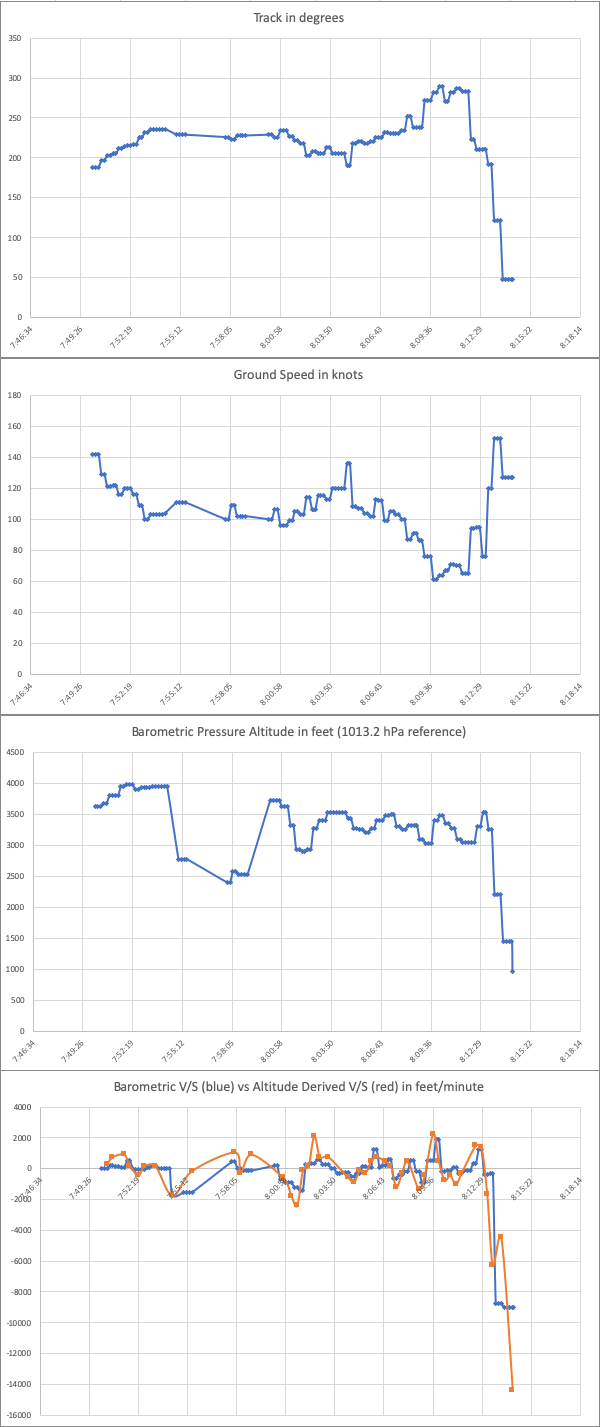There always are two camps regarding tracking data release and accidents. I'm in the "some data is better than no data" camp - it provides a reference frame going beyond the obvious "it dropped off the radar". As
[email protected] points out, the data does allow for valid statements to be made about the flying conditions prior to the incident. But
gulliBell and
212man also have valid points that much of the last seconds of the data must be viewed cautiously due to the nature of how the data is collected. Static and pitot systems may not have been aligned for the designed air flow for correct measurements. The ground speed however is inferred from the GPS ground positions (in the on board GPS, not from the broadcast ground positions in post processing, it is an ADS-B field). It is clearly evident from the plots below that the aircraft turned with the wind, resulting in a corresponding increase in ground speed, which aligns with the ground track data.
Most importantly, it is evident from the pre-incident data points that both track hold and altitude hold were significantly perturbed, either due to the conditions encountered, or a lack of experience/workload on the pilot in dark conditions, resulting in significant departures in altitude and a steadily decreasing ground speed. Whether that was due to the aircraft penetrating increasing headwind and turbulence, or because of handling problems, is not possible to infer from this data. In the vertical speed plot, I derived the vertical speed based on the updated altitudes and they are in very good agreement with the ADS-B reported V/S. I've updated the plot with the last datapoint (not included above), showing the last altitude inferred V/S was -14400 fpm. This amounts to about 80m/s, which is approximately the terminal velocity for a body with a drag coefficient of 0.25 (see
https://dspace-erf.nlr.nl/xmlui/bits...pdf?sequence=1). The sharp left-hand turn at 8:13:07, along with this new V/S datapoint, would lend evidence to the possibility of a main rotor separation. The sudden loss of main rotor torque would lead to a left yaw moment caused by the tail rotor on a counter clockwise rotating main rotor.
Note that because these data are derived from a physical process, prior data points are causal to the next points, therefore connecting them with smoothed lines is not inherently wrong is it might be when connecting randomly moving parameters such as stock prices. But: do not use the smoothed lines inbetween data points for interpolation (as is evident between 7:55 and 7:58)!
